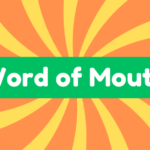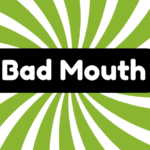The phrase "foam at the mouth" describes extreme anger or agitation, often indicated in dramatic encounters. Its origin relates to the foam appearing in rabid animals, symbolizing uncontrollable emotions. This metaphor gained traction in literature, particularly in Shakespeare's "Julius Caesar." For instance, one might say, "He foamed at the mouth during the heated debate," demonstrating its applicability in everyday conversation. This expression is relevant today, effectively conveying the intensity of human emotions in a concise way. Such vivid imagery not only enriches language but also serves as a reminder of the extremes people can experience in expressing feelings. More examples await exploration.
Synonyms
When evaluating the phrase "foam at the mouth," several synonyms emerge that effectively capture its intense emotional connotation. These fury synonyms and rage equivalents provide a richer understanding of the language surrounding extreme anger and distress. This exploration is essential for precision in both spoken and written communication.
- Agitated
- Enraged
- Irate
- Infuriated
- Fuming
Each of these terms encapsulates varying degrees of frustration and intensity, highlighting the complex nature of human emotion. It is important to select the appropriate synonym to convey the specific emotional undertone desired. As language evolves, these synonyms serve as pivotal tools for expressing the often uncontrollable responses we experience amid fury and rage, emphasizing clarity in emotional discourse.
Example of Sentences
Understanding the various synonyms for "foam at the mouth" allows for a more nuanced expression of intense emotions. By considering related phrases, we can better convey the extremity of feelings. Here are some examples that illustrate this idea:
- The manager foamed at the mouth in response to the team's poor performance.
- She nearly foamed at the mouth when her favorite show was canceled.
- The debate sparked such fury that both sides began foaming at the mouth.
- His impulsive remarks led to a reaction that resembled foaming at the mouth.
- Opponents foamed at the mouth during the heated election discussions.
These sentences highlight how phrases related to this expression serve to depict intense emotions, emphasizing the importance of clear communication in expressing outrage and agitation.
Origin
The origin of the phrase "foam at the mouth" can be traced back to the observable symptoms of rabies in animals, where extreme agitation leads to a foamy discharge around the mouth. In its historical context, this vivid imagery highlights society's response to uncontrollable emotions and physical distress. The phrase evolved through time, reflecting linguistic changes that denote extreme anger as a metaphorical expression. Significantly, William Shakespeare's use in "Julius Caesar" marked a major shift toward figurative language. As evolutionary linguistics suggest, language adapts with cultural perceptions, influencing how emotions are articulated. Consequently, "foam at the mouth" represents both a literal observation and a rich metaphorical journey through human expression of rage, revealing deeper connections within our emotional lexicon.
Collocations
Collocations related to the phrase "foam at the mouth" enhance its expressive capacity, illustrating the depth of emotion it conveys. These metaphorical expressions capture extreme reactions, aligning with the idea of uncontrollable fury. Understanding these combinations adds nuance to our comprehension of anger in communication. Key collocations may include:
- "foam at the mouth with rage"
- "foam at the mouth in frustration"
- "foam at the mouth over issues"
- "foam at the mouth during disputes"
- "foam at the mouth towards injustice"
Each phrase reflects the intensity of emotion that accompanies these extreme reactions, enriching our language. By examining these collocations, we gain critical insight into how language mirrors human experience, providing a more thorough understanding of emotional expression.
How to Use in Everyday Language
Incorporating the phrase "foam at the mouth" into everyday language can add vividness to descriptions of anger or frustration. This expression effectively captures intense emotional responses while offering a dramatic flair to conversations. For instance, when discussing a colleague's rage over project delays, saying they "foamed at the mouth" conveys the extremity of their feelings. However, it's crucial to use this phrase judiciously; overuse can dilute its impactful imagery. As with many everyday expressions, balancing innovation with clarity is key. Consider the audience's familiarity with the term to enhance understanding without alienation. By thoughtfully integrating such phrases, we enrich our communication, offering insightful glimpses into human emotional experiences, while maintaining an eye on effective language use.
Why Is It Still Relevant Today?
While language evolves over time, the phrase "foam at the mouth" remains relevant today as it succinctly captures the visceral intensity of extreme anger and frustration. Its cultural significance persists, providing a vivid metaphor for emotional expression in both casual and serious conversations. In an era where communication often lacks depth, this phrase conveys a powerful image that encapsulates uncontrollable rage. Despite its somewhat grim origin, it aids in articulating feelings that many experience, yet struggle to describe. In addition, the ongoing use reflects society's need for concise language that can effectively convey complex emotions. Consequently, "foam at the mouth" continues to resonate, serving as a reminder of the intensity human feelings can evoke in various contexts.







